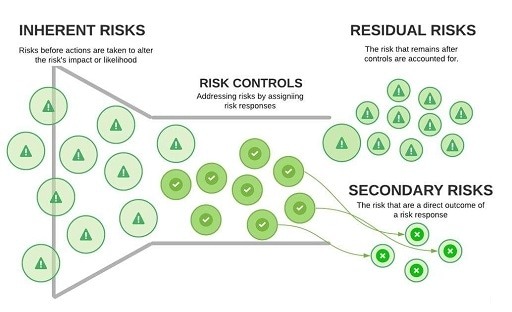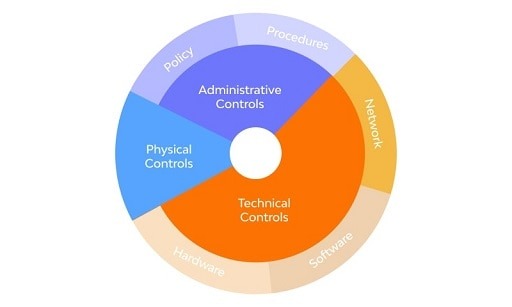With the advancement of technology, criminals also innovate ways to exploit it. The threat of malicious attacks is a significant concern for individuals and organizations alike, with ransomware, phishing, and data breaches being just a few of the many forms these attacks can take.
To combat these threats, newer technologies like machine learning and artificial intelligence have been developed to provide better defense mechanisms. How precisely do these systems detect and prevent malicious attacks?

The Role of AI and ML in Cybersecurity
The tools of artificial intelligence (AI) and machine learning (ML) share similarities, but also possess distinct capabilities in identifying and preventing potential hazards. Through the use of algorithms, AI technology can analyze data patterns that may suggest malicious or suspicious behavior. By identifying these potential threats, AI can alert security teams to take action and prevent harm from occurring.
The role of AI (Artificial Intelligence) and ML (Machine Learning) in cybersecurity is rapidly growing. These technologies are increasingly being used to detect and prevent cyber attacks, as well as to enhance the overall security posture of organizations.
One of the main benefits of AI and ML in cybersecurity is their ability to analyze vast amounts of data quickly and accurately. This allows them to identify patterns and anomalies that may indicate a potential threat or attack. For example, AI and ML can be used to analyze network traffic and identify unusual or suspicious activity that may indicate a cyber attack.
Additionally, AI and ML can be used to automate certain cybersecurity tasks, such as threat detection and response. This can help organizations respond more quickly and effectively to cyber attacks, reducing the impact of such attacks.
You can also read: Essential IT Security Tech for Businesses
Another way in which AI and ML are being used in cybersecurity is to improve the accuracy of threat detection. By constantly analyzing data and learning from previous attacks, these technologies can identify new threats and patterns of attack that may have previously gone undetected.
How do AI and ML detect and prevent cyberattacks?
Numerous applications exist for utilizing AI and ML in detecting and stopping malicious threats.
Monitoring user activity: AI and ML can monitor user behavior across multiple platforms and detect any suspicious or malicious activity. This enables security teams to receive notifications before any harmful attacks occur.
Increasing the accuracy for detecting malicious threats: AI and ML can enhance the precision of malware detection systems by utilizing algorithms that can recognize data patterns suggesting dubious behavior.
Updating signature-based malware defenses: The utilization of AI and ML can assist in updating signature-based malware detection systems by detecting new variants of existing malware through algorithms. This preemptive approach allows harmful actions to be prevented before causing any damage.
Detect zero-day threats: AI and ML can also play a role in identifying dangerous zero-day threats. By training algorithms with intentionally flawed data, they can detect small data trends that could indicate a zero-day attack before it occurs.
You can also read: What is Real-Time protection and why does it matter?
Identifying suspicious content: With the aid of AI and ML, detecting suspicious content such as phishing links or malicious URLs can be automated, eliminating the need for manual verification. By scouring the web for such content, security teams can proactively take measures to prevent any potential attack from victimizing individuals.
Benefits of using AI and ML for Cybersecurity
There are several benefits of using AI and ML for cybersecurity. Here are some of them:
- Improved threat detection: AI and ML can analyze vast amounts of data in real-time to identify patterns and anomalies that may indicate a potential threat or attack. This can improve the accuracy and speed of threat detection.
- Faster response times: With AI and ML, certain cybersecurity tasks can be automated, such as threat detection and response. This can help organizations respond more quickly and effectively to cyber attacks, reducing the impact of such attacks.
- Reduced false positives: AI and ML can reduce the number of false positives that security teams have to deal with. This is because these technologies can analyze data and learn from previous attacks, allowing them to identify new threats and patterns of attack that may have previously gone undetected.
- Enhanced efficiency: By automating certain cybersecurity tasks, such as threat detection and response, AI and ML can reduce the workload for security teams, allowing them to focus on more complex tasks that require human expertise.
- Better threat intelligence: AI and ML can help organizations gain a better understanding of the threat landscape. By analyzing vast amounts of data and identifying new threats and patterns of attack, these technologies can provide valuable threat intelligence that can be used to improve overall cybersecurity posture.
Limitations and Challenges of Using AI and ML
Although AI and ML offer numerous advantages for cybersecurity, there are also certain limitations and challenges associated with their use.
- A significant requirement for AI and ML systems is a large dataset for proper training. Inadequate data points could lead to inaccurate detection of malicious threats. Additionally, finding appropriately labelled datasets for training can be a challenge, as manual labelling of data is a time-consuming and labor-intensive process.
- Artificial intelligence and Machine Learning systems are often regarded as opaque or black boxes, making it difficult to understand why certain conclusions were reached. This lack of transparency can cause security personnel to question the findings, resulting in missed or falsely reported malicious activity.
- To remain effective, these systems need constant monitoring and updating. With the emergence of new malware or the adaptation of existing malware, these systems must be able to adjust accordingly. This necessitates resources and time from security teams, which may be challenging for certain organizations to provide.
- Developing an AI or ML system from scratch can be expensive. The cost of hardware and software resources needed for the proper operation of these systems can be substantial, depending on the size of the business. This may make it challenging for some businesses to implement such systems.
It’s advisable to use AI and ML to boost online security
Artificial intelligence and machine learning offer promising solutions for combating cybercriminals. Investing in AI and ML for cybersecurity is a worthwhile investment since it can provide enhanced protection against malicious activity. By turning to AI and ML, you can lower the risk of data breaches and other cyberattacks.
You can also read: How is Cyber-Security Hampering Small Businesses?
Additionally, if you have adequate resources and personnel, implementing these systems can improve the effectiveness and efficiency of your company’s cybersecurity measures. However, it is essential to note that these technologies are not yet proven to replace humans entirely, and there are limitations and challenges to consider.
Would you like to read more about how AI and ML detect and prevent cyberattacks-related articles? If so, we invite you to take a look at our other tech topics before you leave!










